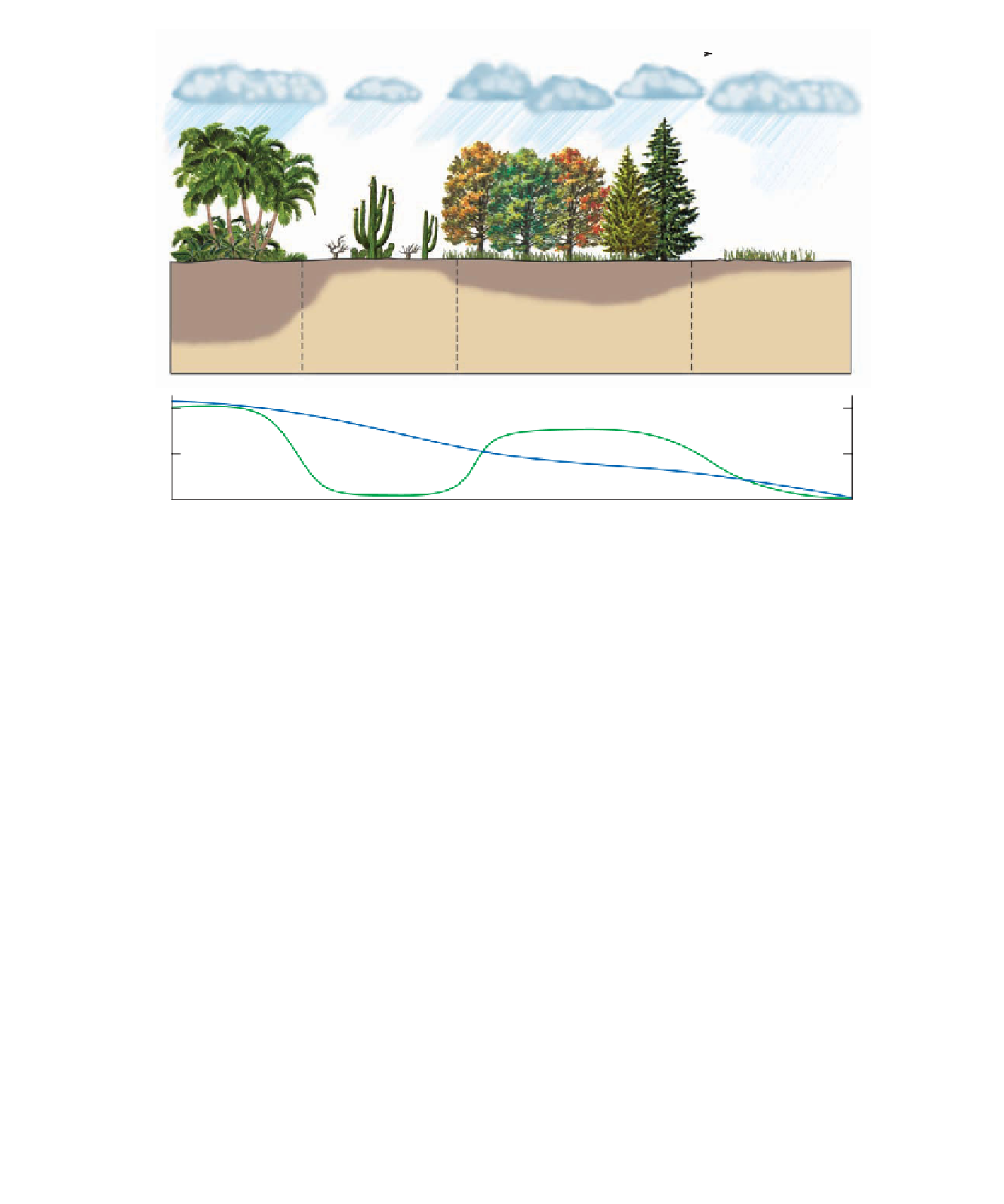Geology Reference
In-Depth Information
100
- >
200 cm/yr
<
25 cm/yr
50
-
200 cm/yr
<
25
-
50 cm/yr
North
Precipitation
Soil
Parent material
Tropics
Desert
Temperate regions
Arctic
High
20
Vegetation
Moderate
10
None
0
◗
Figure 6.11
Climate and Soil Formation Generalized diagram showing soil formation as a function
of the relationships between climate and vegetation, which alter parent material over time. Soil
formation operates most vigorously where precipitation and temperatures are high, as in the tropics.
of “calcite” (Figure 6.12b). These soils contain less organic
matter than pedalfers, so horizon A is lighter in color and
contains more unstable minerals because of less intense
chemical weathering. As soil water evaporates, calcium
carbonate leached from above precipitates in horizon B
where it forms irregular masses of
caliche.
Precipitation of
sodium salts in some desert areas where soil water evapora-
tion is intense yields
alkali soils
that are so alkaline that they
cannot support plants.
Laterite
forms in the tropics where chemical weathering
is intense and leaching of soluble minerals is complete. These
soils are red, extend to depths of several tens of meters, and
are composed mostly of aluminum hydroxides, iron oxides,
and clay minerals; even quartz, a chemically stable mineral,
is leached out (Figure 6.12c).
Although laterite supports lush vegetation, it is not very
fertile. The native vegetation is sustained by nutrients derived
mostly from the surface layer of organic matter, but little hu-
mus is present in the soil because bacterial action destroys it.
When laterite is cleared of its native vegetation, the surface ac-
cumulation of organic matter rapidly oxidizes, and there is little
to replace it. Consequently, societies that practice slash-and-
burn agriculture clear these soils and raise crops for only a few
years at best. Then the soil is depleted of plant nutrients, the
clay-rich laterite bakes brick hard in the tropical sun, and the
farmers move on to another area where the process is repeated.
The same rock type can yield different soils in differ-
ent climatic regimes and, in the same climatic regime, the
same soils can develop on different rock types. Thus, climate
is more important than parent material in determining the
type of soil. Nevertheless, rock type does exert some con-
trol. For example, the metamorphic rock quartzite will have
a thin soil over it because it is chemically stable, whereas an
adjacent body of granite will have a much deeper soil.
Soils depend on organisms for their fertility, and in
return they provide a suitable habitat for many organisms.
Earthworms, ants, sowbugs, termites, centipedes, millipedes,
and nematodes, along with fungi, algae, and single-celled
organisms, make their homes in soil. All contribute to soil
formation and provide humus when they die and decompose
by bacterial action.
Much of the humus in soils comes from grasses or leaf
litter that microorganisms decompose to obtain food. In so
doing, they break down organic compounds in plants and
release nutrients back into the soil. In addition, organic
acids from decaying soil organisms are important in further
weathering of parent materials and soil particles.
Burrowing animals constantly churn and mix soils,
and their burrows provide avenues for gases and water. Soil
organisms, especially some types of bacteria, are extremely
important in changing atmospheric nitrogen into a form of
soil nitrogen suitable for use by plants.

Search WWH ::

Custom Search